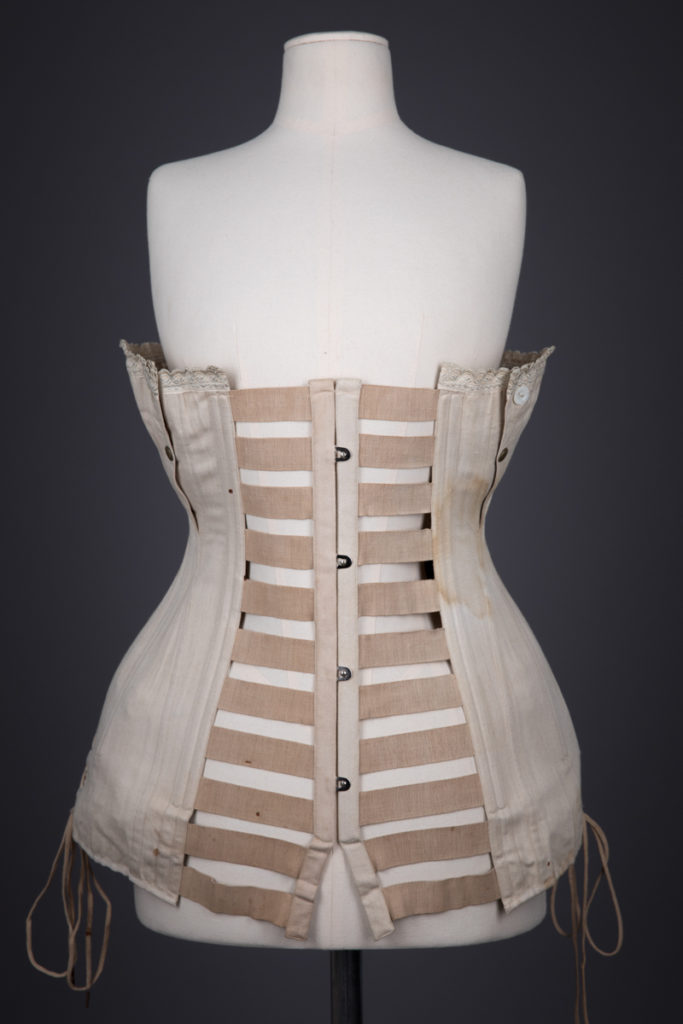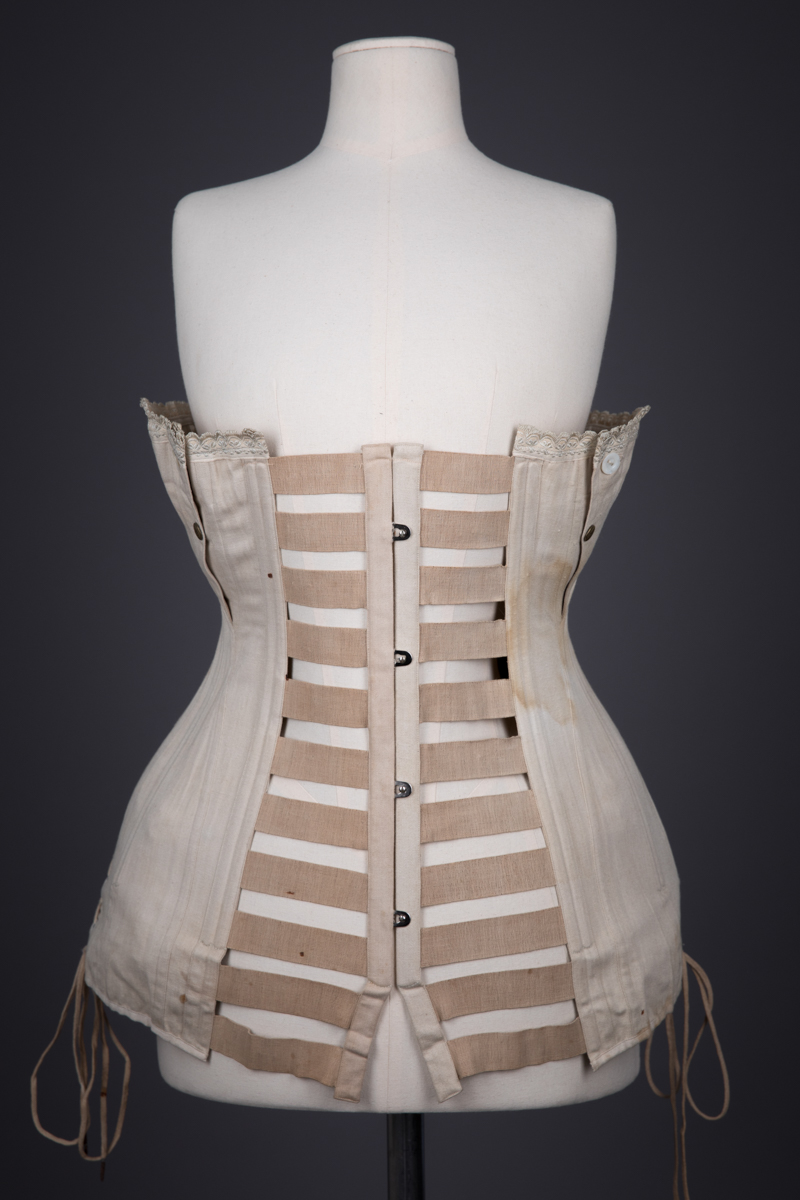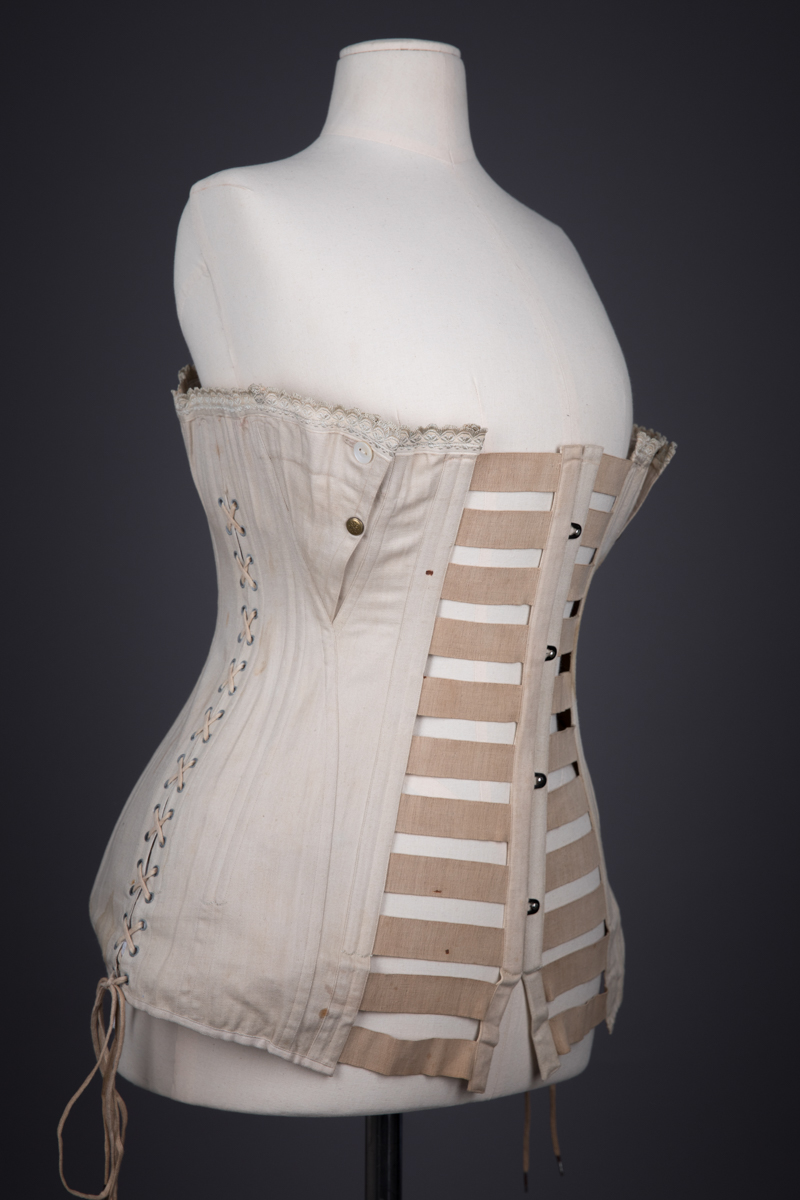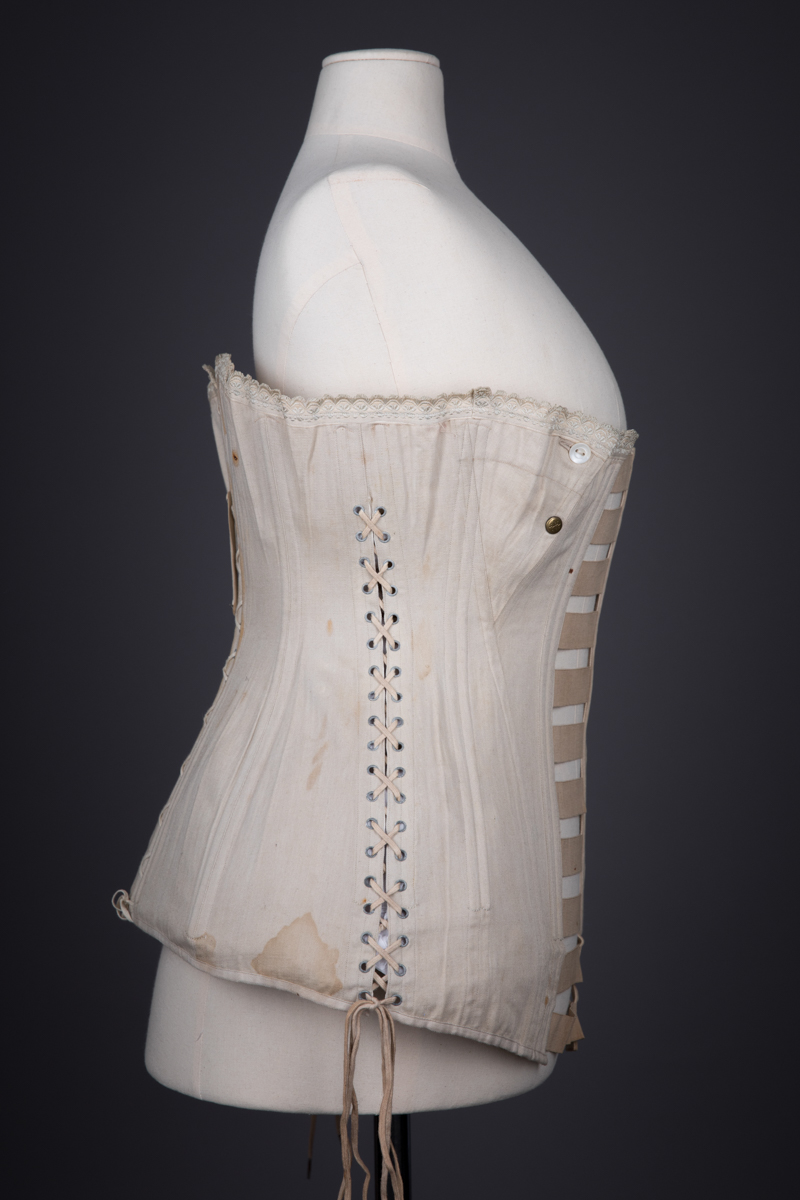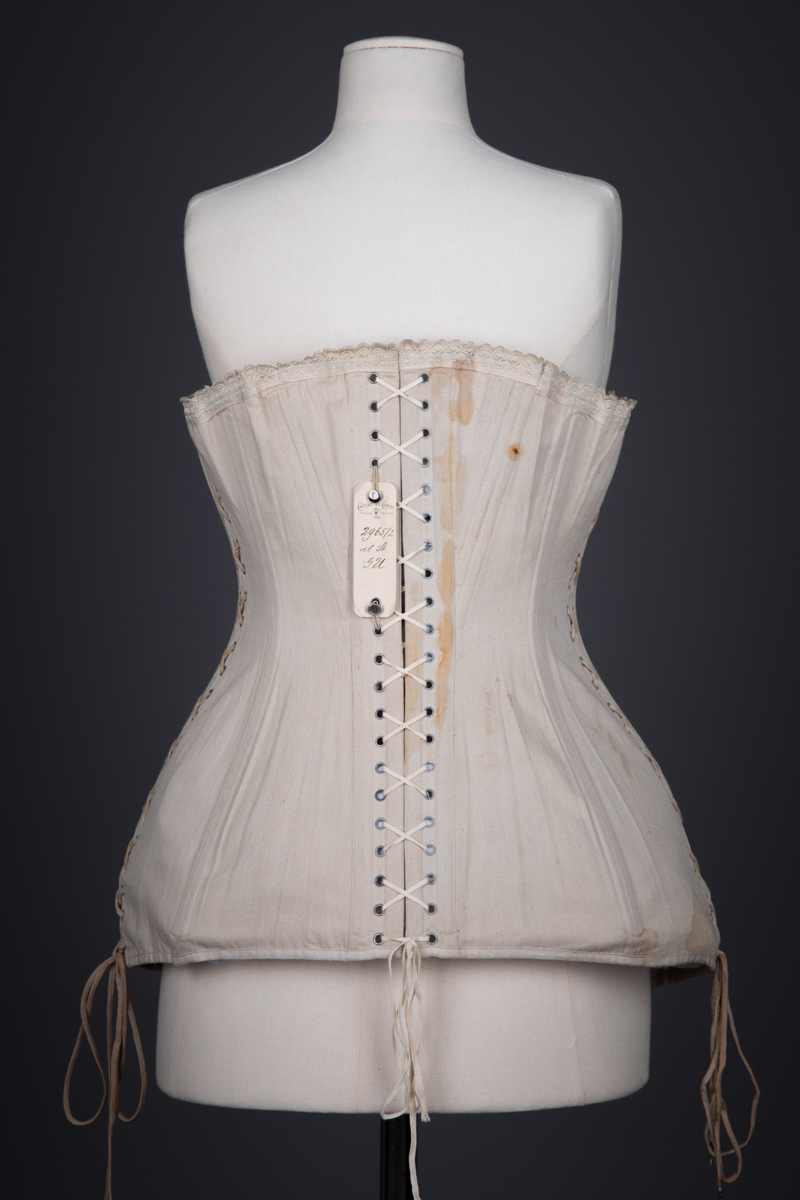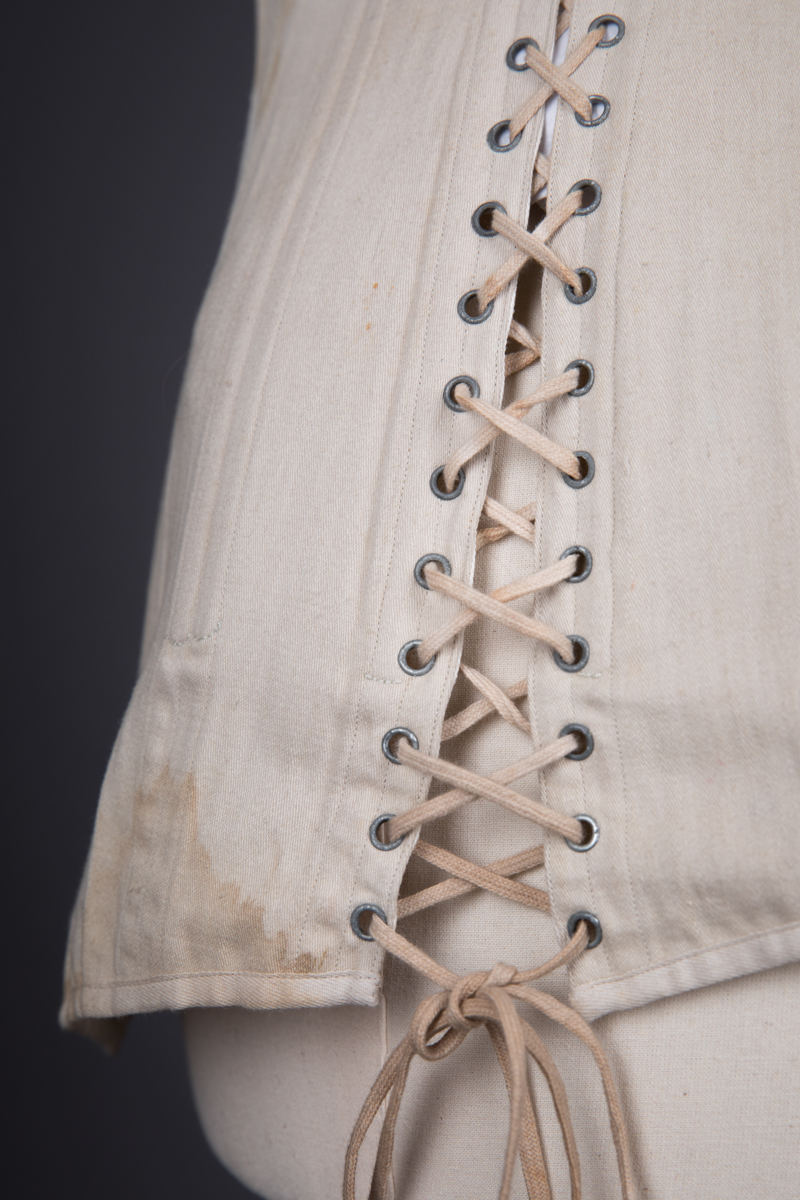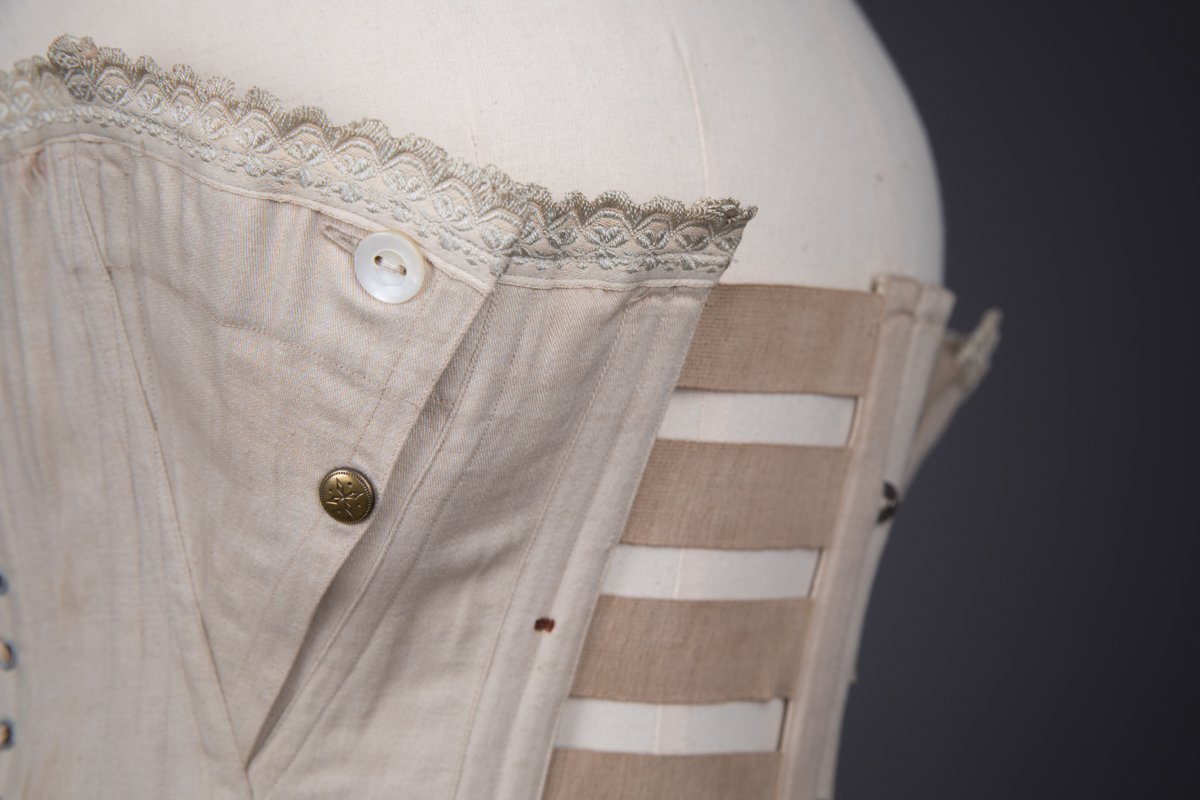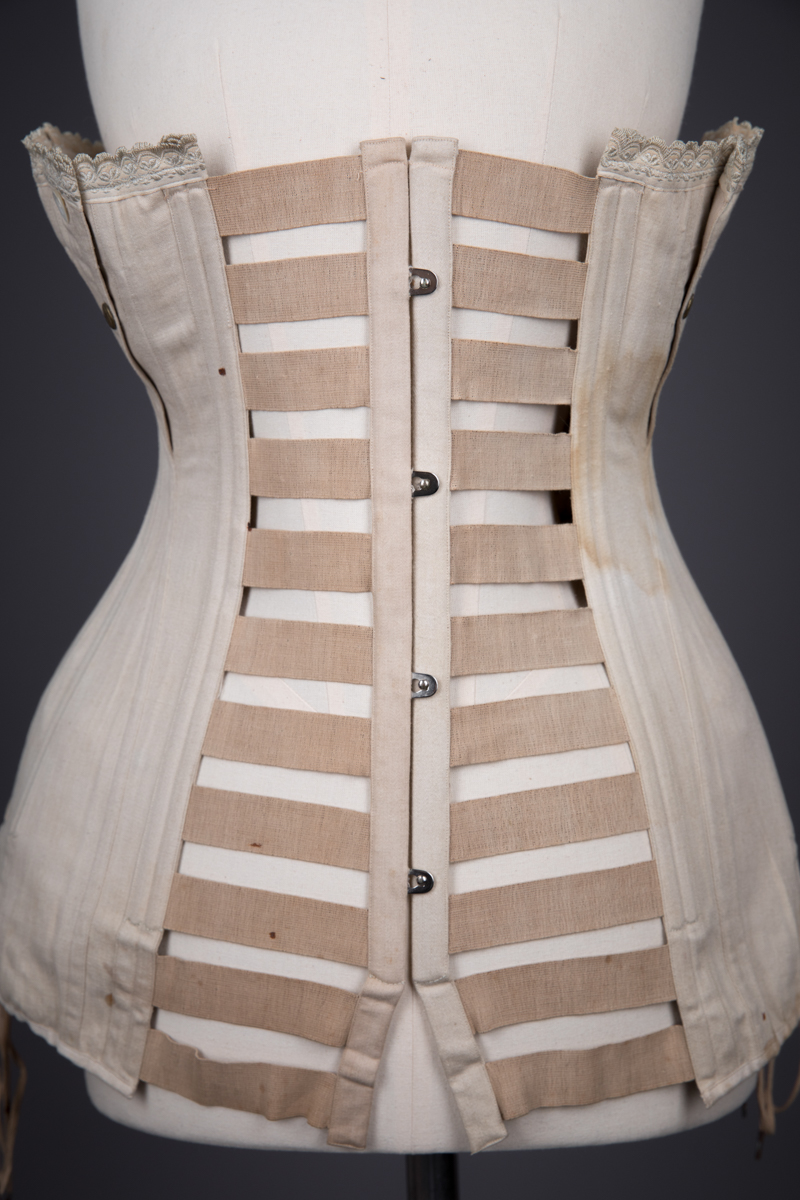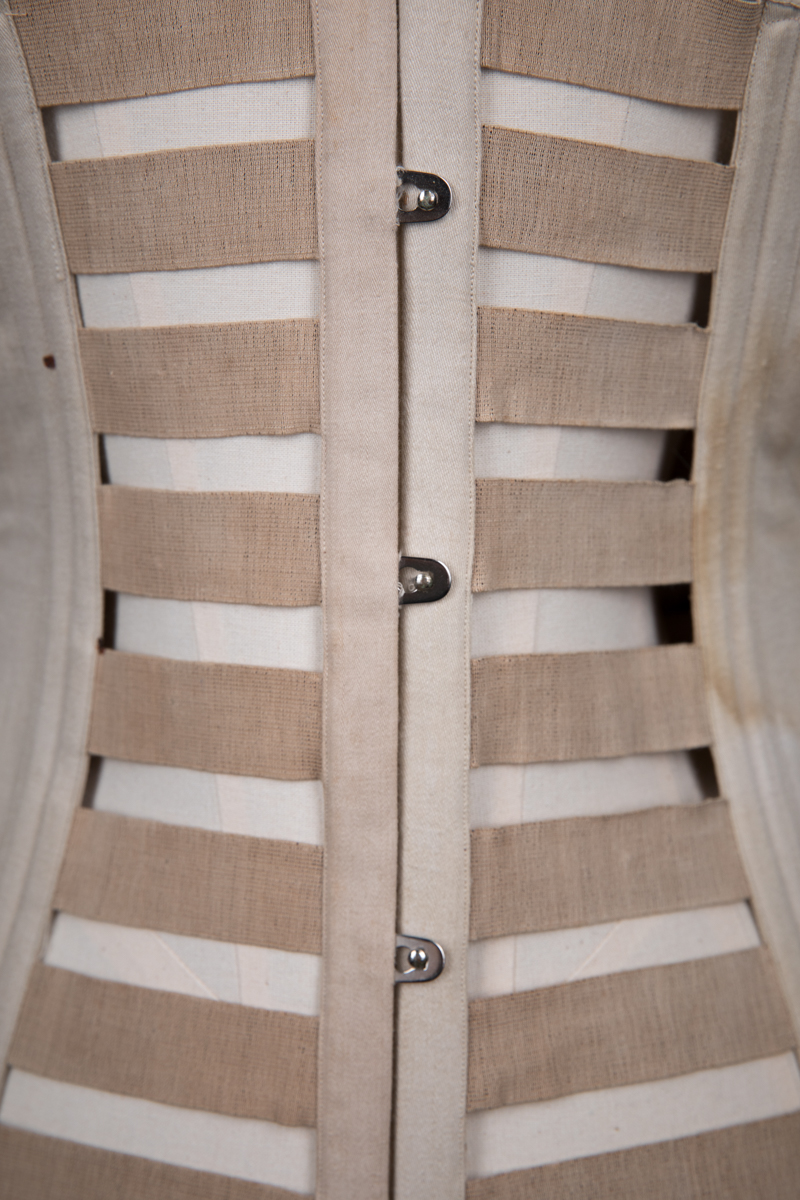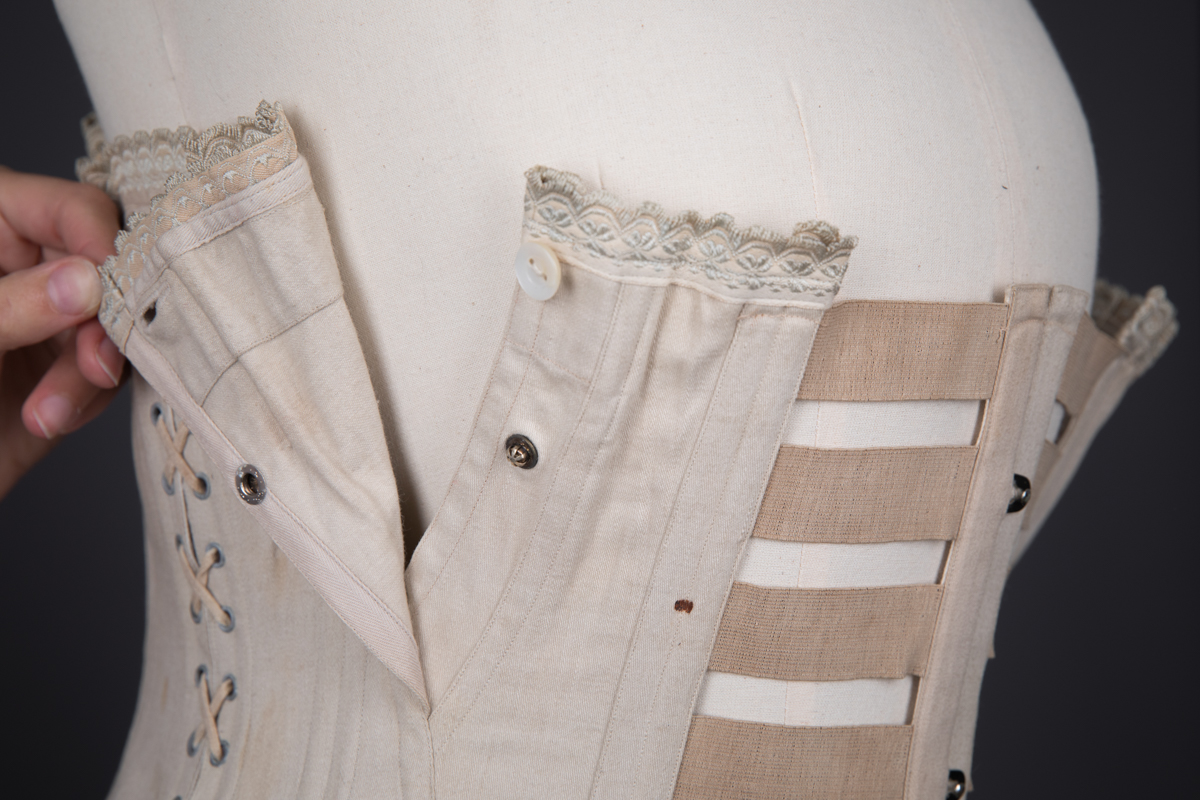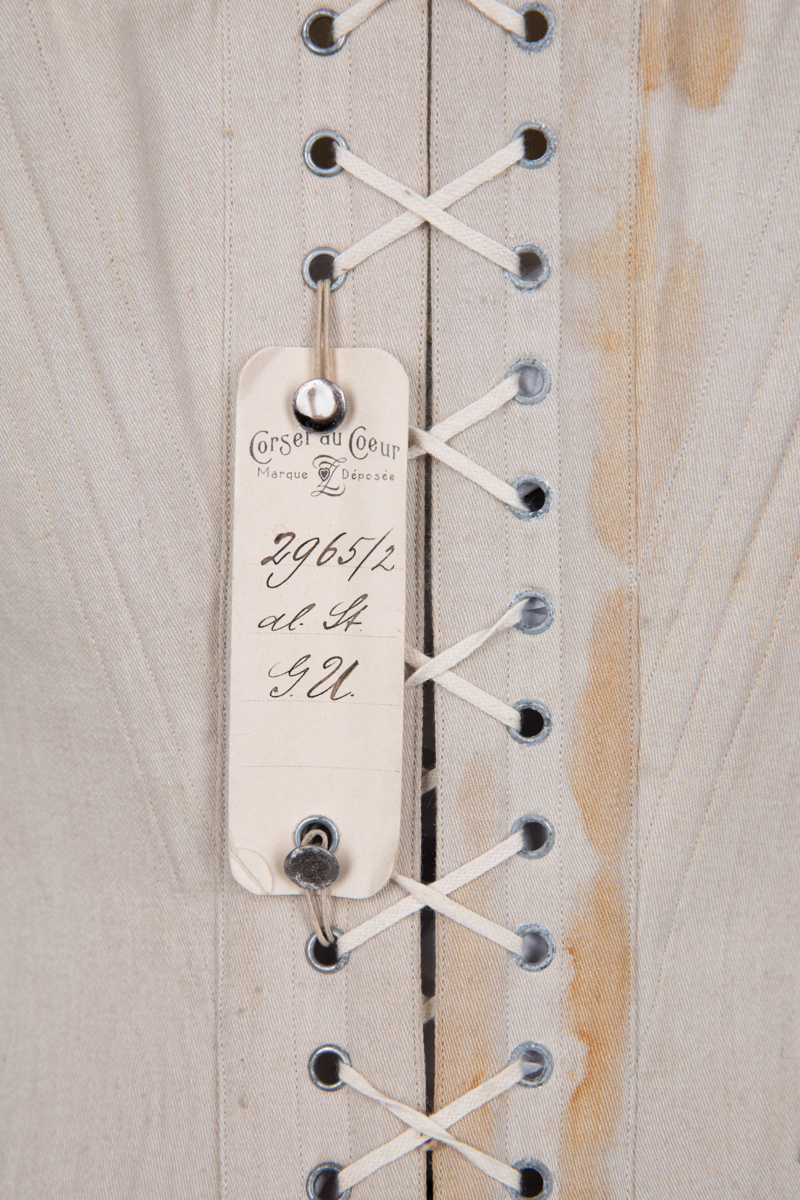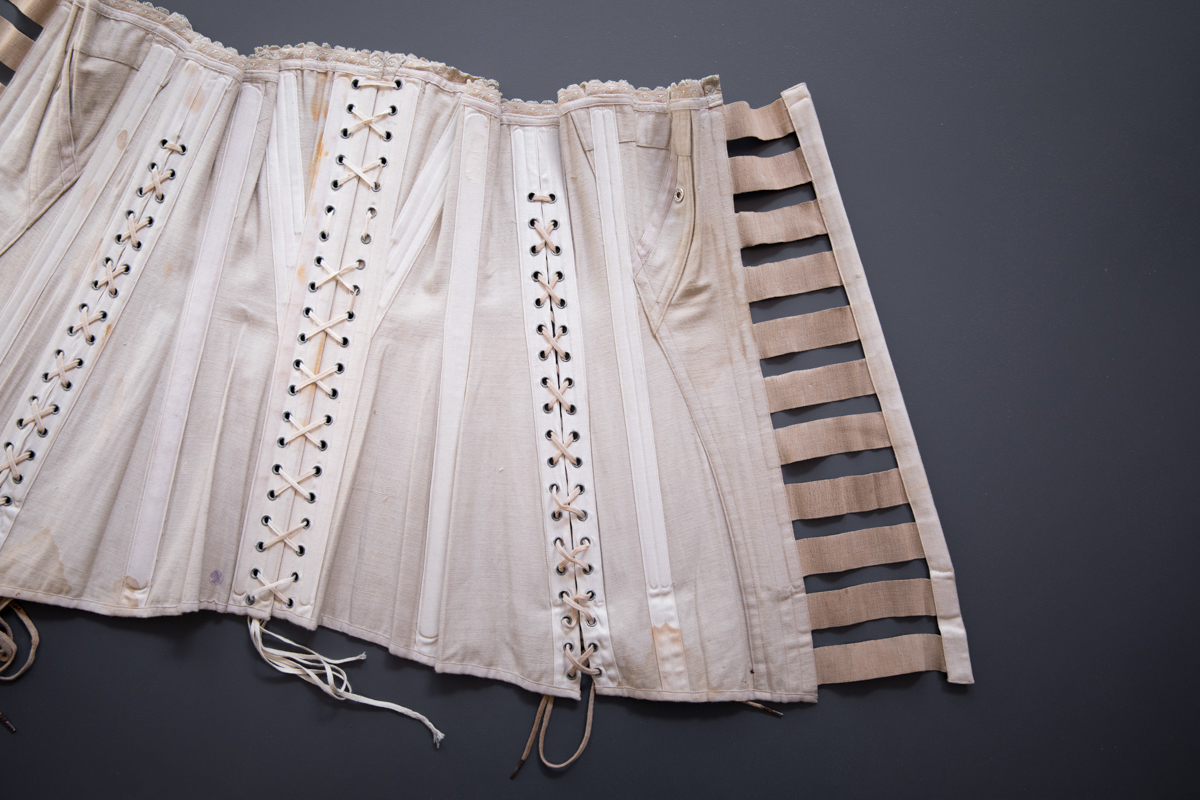Date: c. 1910s
Origin: France
Fabric: Cotton and elastic
Brand: Corset Au Coeur
A corset designed for use during pregnancy and nursing, made from a single layer of cotton drill. The centre of the garment is made of elastic strapping, joining the body of the corset with the busk fastening. The top and bottom edges are bound with a cotton tape, with a decorative woven trim embellishing the top edge. The corset is structured throughout with flat steel bones. The sides and centre back of the corset have single part metal eyelets, with the original cotton lacing.
This corset design is incredibly unusual; the fact that it appears to have been unworn and still has the shop labels attached suggests that this combination of atypical design features never caught on.
The corset is designed for use during both pregnancy and nursing. The side panels seams are laced and can be adjusted to suit a changing body shape. The bust panels can be opened with both a metal popper and bone button, offering convenience for the wearer to breastfeed without completely undressing.
The centre front of the corset is made up of a ‘cage’ style construction of elastic, connected to the centre busk fastening. Elastic was still a relatively new technology for this time period, and stretch clothing would likely have been considered quite innovative, allowing a new level of comfort; it’s likely that the designer of this garment would have imagined the elastic would stretch and accommodate the wearer’s changing abdomen shape.
Unfortunately, these good intentions were likely not quite as practical in reality: the ‘cage’ construction and slightly compressing nature of a corset (even on a maternity one) would have made the ‘gaps’ in the elastic somewhat uncomfortable. Early elastic technology was also somewhat unstable: it comprised of a latex core wrapped in a textile outer, and was prone to becoming brittle and perishing. Indeed, over a century later these elastic panels have completely lost any semblance of stretch and have deformed with time, so the fit of the garment is somewhat distorted (not to mention that unfortunately the garment is a larger size than stock mannequins and has had to be padded for these photos).
These well intentioned elastic panels would have meant this corset only had a lifespan for a couple of years, making it a poor investment for such an expensive garment. The majority of garments that used elastic during this time period were stitched so that the elastic could be removed and replaced with relative ease (such as suspender straps on corset, which were typically the last thing to be sewn to a garment); unfortunately for this design, they are stitched into seams so replacing them would be extremely time consuming and not particularly cost effective.
These design flaws are likely why this corset survived to this day unworn, and why we haven’t seen more of this style of elastication in garments from the early 20th century.
From the collection of Karolina Laskowska
